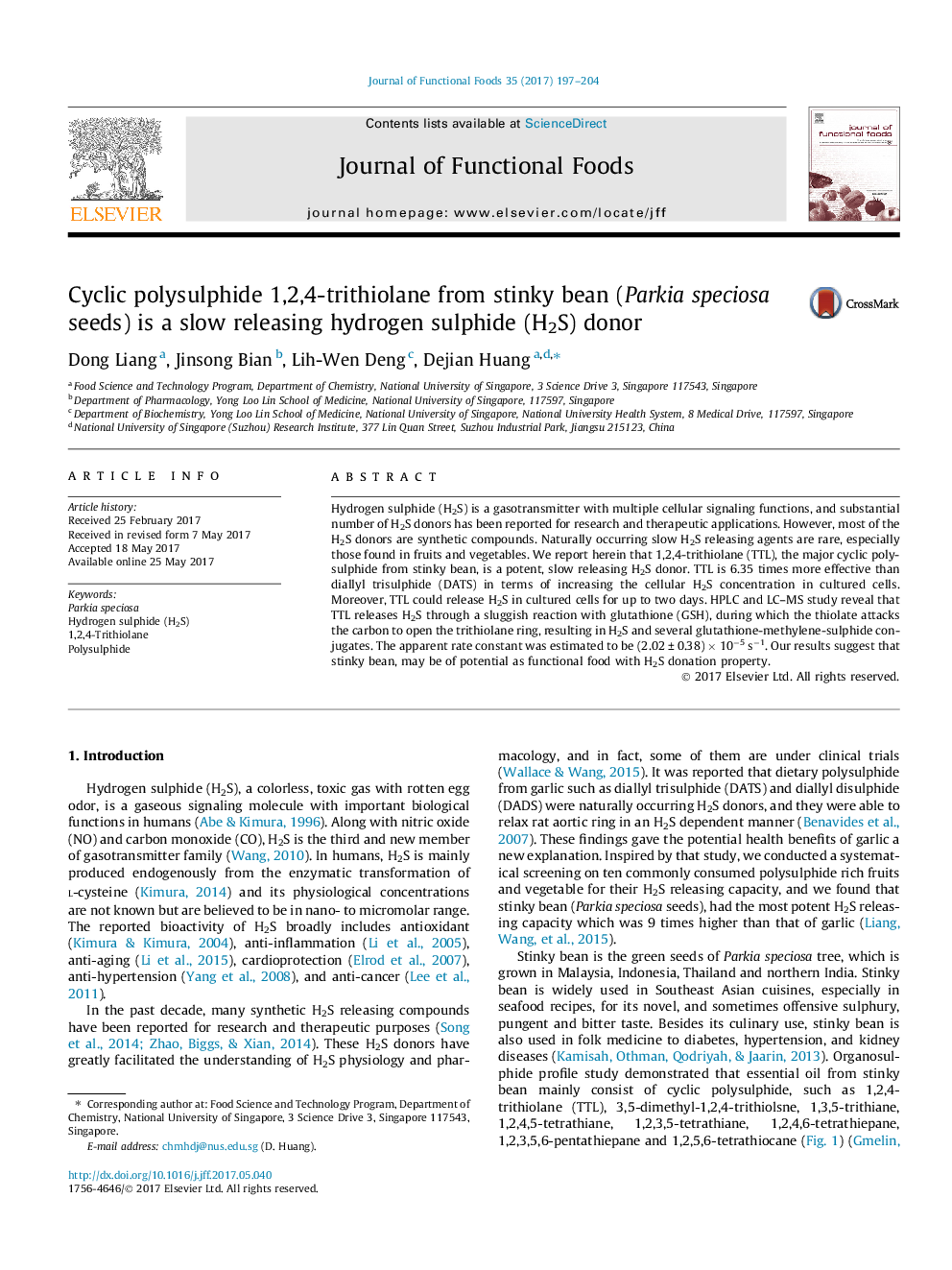| کد مقاله | کد نشریه | سال انتشار | مقاله انگلیسی | نسخه تمام متن |
|---|---|---|---|---|
| 5137260 | 1494531 | 2017 | 8 صفحه PDF | دانلود رایگان |

- Trithiolane reacts with glutathione slowly to release H2S.
- Releasing of H2S by trithiolane is dependent on the cells.
- Lead acetate paper test is an effective method for quantification of H2S donation activity.
- Stinky bean is a good dietary source for H2S donors.
Hydrogen sulphide (H2S) is a gasotransmitter with multiple cellular signaling functions, and substantial number of H2S donors has been reported for research and therapeutic applications. However, most of the H2S donors are synthetic compounds. Naturally occurring slow H2S releasing agents are rare, especially those found in fruits and vegetables. We report herein that 1,2,4-trithiolane (TTL), the major cyclic polysulphide from stinky bean, is a potent, slow releasing H2S donor. TTL is 6.35 times more effective than diallyl trisulphide (DATS) in terms of increasing the cellular H2S concentration in cultured cells. Moreover, TTL could release H2S in cultured cells for up to two days. HPLC and LC-MS study reveal that TTL releases H2S through a sluggish reaction with glutathione (GSH), during which the thiolate attacks the carbon to open the trithiolane ring, resulting in H2S and several glutathione-methylene-sulphide conjugates. The apparent rate constant was estimated to be (2.02 ± 0.38) Ã 10â5 sâ1. Our results suggest that stinky bean, may be of potential as functional food with H2S donation property.
Journal: Journal of Functional Foods - Volume 35, August 2017, Pages 197-204